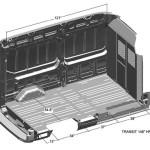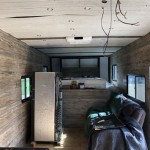How Much Does It Cost To Install New Interior Doors?
Replacing or installing new interior doors can significantly impact a home's aesthetics and functionality. Interior doors provide privacy, sound insulation, and contribute to the overall design scheme. However, understanding the costs associated with this project is crucial for effective budgeting and planning. The total expense for new interior doors varies depending on various factors, including the type of door, materials, labor costs, and any necessary preparatory work.
The purpose of this article is to provide a comprehensive overview of the costs involved in installing new interior doors. It will break down the individual components contributing to the total expense, discuss regional cost differences, explore different door types and features, and offer valuable tips for managing the project effectively to stay within budget.
Factors Influencing Interior Door Installation Costs
Several key factors influence the overall cost of installing new interior doors. These factors interact to determine the final price, and understanding them allows homeowners to make informed decisions and manage their budgets effectively.
Door Type and Material: The type of door selected has a significant impact on the cost. Standard hollow-core doors are generally the most affordable option, while solid-core doors, offering better sound insulation and durability, are considerably more expensive. Solid wood doors, prized for their aesthetics and craftsmanship, represent the higher end of the price spectrum. Material choices such as wood, fiberglass, steel, or composite materials also contribute to the cost differences. For example, a pre-hung hollow-core door might cost between $30 and $80, while a solid wood door could range from $200 to $1,000 or more.
Door Size and Customization: Standard door sizes are typically more readily available and less expensive than custom-sized doors. If the existing door frames require modification to accommodate a non-standard size, it will add to the overall labor costs. Custom door designs, including unique paneling, decorative glass inserts, or specific hardware requirements, also increase the material and installation expenses. Expect to pay a premium for custom work, as it often requires specialized skills and more time.
Door Features and Hardware: The complexity of the door's features will also impact the final price. Features such as fire-rated doors, soundproof doors, or doors with integrated glass panels all come with additional costs. Similarly, the choice of door hardware, including door knobs, handles, hinges, and locks, can significantly affect the total project cost. Basic hardware is generally inexpensive, but high-end or designer hardware can add hundreds of dollars to the budget. Smart locks and other advanced access control systems will further increase the overall expenditure.
Pre-hung vs. Slab Doors: The choice between pre-hung and slab doors also influences the cost. Pre-hung doors come already mounted within a frame, simplifying the installation process and potentially reducing labor costs. Slab doors, on the other hand, are simply the door itself, without a frame. Installing a slab door requires more skill as the installer must build the frame, hang the door, and ensure it aligns properly. While slab doors themselves may be less expensive, the increased labor costs associated with their installation can ultimately make them more expensive than pre-hung doors.
Labor Costs: Labor costs vary based on geographical location, the complexity of the installation, and the experience of the installer. Highly skilled carpenters or contractors typically charge higher hourly rates than less experienced handymen. The amount of time required to install a door depends on several factors, including whether it is a pre-hung or slab door, whether the existing frame needs to be modified, and whether any electrical or plumbing work is necessary. Labor costs can range from $150 to $500 per door, depending on these factors.
Preparation and Finishing: The cost of preparing the door and the surrounding area for installation can also impact the overall cost. This might involve removing the old door and frame, patching any holes or damage to the wall, and preparing the surface for painting or staining. Finishing the door, which includes painting, staining, or applying a sealant, adds to the overall cost. The price of these materials and labor can vary significantly depending on the quality of the products used and the scope of the work involved.
Regional Cost Differences
Installation costs can vary significantly based on geographical location. Labor rates, material costs, and local market conditions influence the overall price of installing new interior doors. Areas with a higher cost of living, such as major metropolitan cities, typically have higher labor rates and material costs compared to rural areas.
For example, the same door installation project might cost considerably more in New York City or San Francisco than it would in a smaller town in the Midwest. This difference is primarily due to the higher demand for skilled tradespeople in urban areas and the increased cost of materials due to transportation and storage expenses.
In addition to the cost of living, regional building codes and permitting requirements can also impact the overall cost. Some areas may require specific types of doors or installation methods to comply with local regulations, which can add to the expense. Therefore, it is essential to research local market conditions and obtain multiple quotes from different contractors to get an accurate estimate of the costs in a specific region.
Detailed Breakdown of Door Types and Associated Costs
Understanding the different types of interior doors available and their associated costs is crucial for making informed budgeting decisions.
Hollow-Core Doors: These are the most affordable option, made with a frame covered by a thin veneer. They are lightweight, easy to install, and suitable for areas where sound insulation is not a primary concern, such as closets or pantries. The cost for a pre-hung hollow-core door typically ranges from $30 to $80, while the cost for a slab door can be even lower. Labor costs for installation are generally lower due to their ease of handling and installation.
Solid-Core Doors: These doors offer better sound insulation and durability compared to hollow-core doors. They are constructed with a solid core of composite material or wood particles, providing a denser and more substantial feel. Solid-core doors are suitable for bedrooms, bathrooms, and home offices where privacy and noise reduction are important. The cost for a pre-hung solid-core door typically ranges from $100 to $300, depending on the material and design. Installation costs are slightly higher than for hollow-core doors due to their increased weight.
Solid Wood Doors: These are the most expensive option, made from solid wood, such as oak, maple, or pine. They offer exceptional aesthetics, durability, and sound insulation. Solid wood doors are suitable for high-end homes, formal living areas, and areas where a luxurious look and feel are desired. The cost for a solid wood door can range from $200 to $1,000 or more, depending on the type of wood, design, and craftsmanship. Installation costs are generally higher due to the weight and complexity of working with solid wood.
Glass Panel Doors: These doors feature glass panels, allowing natural light to flow between rooms. They can be used in various applications, such as French doors, pantry doors, or office doors. The cost for a glass panel door ranges from $150 to $500 or more, depending on the size, type of glass, and frame material. Installation costs can be higher due to the need for careful handling to avoid damaging the glass.
Bi-Fold Doors: These doors consist of two or more panels that fold together when opened, making them ideal for closets, laundry rooms, or other small spaces where a traditional swing door would not be practical. The cost for bi-fold doors ranges from $50 to $300 or more, depending on the material and design. Installation costs are typically lower than for other types of doors due to their relatively simple construction and installation process.
Tips for Managing Door Installation Costs
Effective planning and management are essential for keeping door installation costs within budget. Consider the following suggestions:
Obtain Multiple Quotes: Get estimates from at least three different contractors. This allows for comparison of pricing and services. It is not always advisable to select the lowest bid, as quality and reliability should be considered. Review contractor references and online reviews to assess their reputation and workmanship.
Consider Pre-hung Doors: While slab doors may seem cheaper initially, the additional labor costs associated with framing and hanging them can ultimately make them more expensive than pre-hung doors. Pre-hung doors simplify the installation process and reduce the amount of time required, potentially saving on labor costs.
Prepare the Area Yourself: To save on labor costs, consider handling some of the preparatory work yourself. This might include removing the old door and frame, cleaning the area, and patching any minor damage to the wall. However, be sure to consult with the contractor before attempting any work to ensure that it is done correctly and does not void any warranties.
Choose Standard Sizes and Designs: Opting for standard door sizes and designs will reduce the need for custom work, which can significantly increase costs. Standard sizes are readily available, and standard designs are typically less expensive than custom options.
Consider DIY Installation (with Caution): If you have experience with carpentry and are comfortable with basic home improvement tasks, you might consider installing the doors yourself. However, it is important to be realistic about your skills and abilities. Incorrect installation can lead to problems such as doors that don't close properly, drafts, or structural issues. If you are not confident in your abilities, it is best to hire a professional.
Factor in Finishing Costs: Don't forget to factor in the cost of finishing the doors, including painting, staining, and applying a sealant. These materials can add to the overall cost, and it is important to choose high-quality products that will protect the door and enhance its appearance.
Plan Ahead: Proper planning can help prevent unforeseen expenses. Measure door openings accurately and account for any potential challenges, such as uneven floors or walls. By addressing these issues in advance, you can avoid costly surprises during the installation process.
By carefully considering all these factors, homeowners can gain a clear understanding of the costs associated with installing new interior doors and make informed decisions that align with their budget and aesthetic preferences.

Cost To Install Doors The Home Depot

Cost To Install Doors The Home Depot

2024 Interior Door Installation Cost Bedroom Closet Bathroom

Cost To Install Door Casing Trim Fixr

Cost To Install Doors The Home Depot

How Much Does It Cost To Install A Pocket Door 2024 Data Angi

Cost To Install Doors The Home Depot

Cost To Install Doors The Home Depot

How Much Does It Cost To Install Sliding Interior Doors

How Much Does It Cost To Install Sliding Interior Doors
Related Posts








